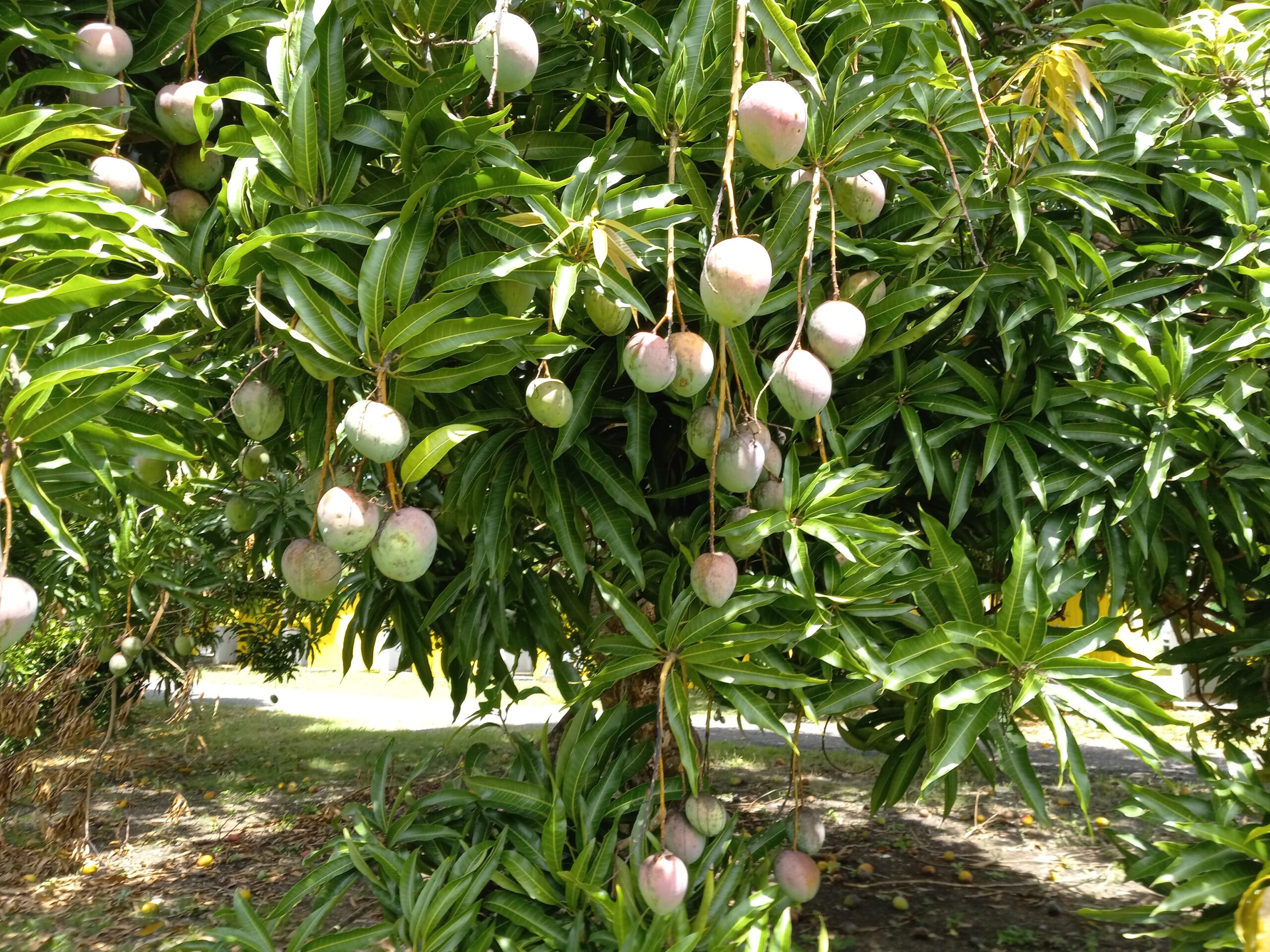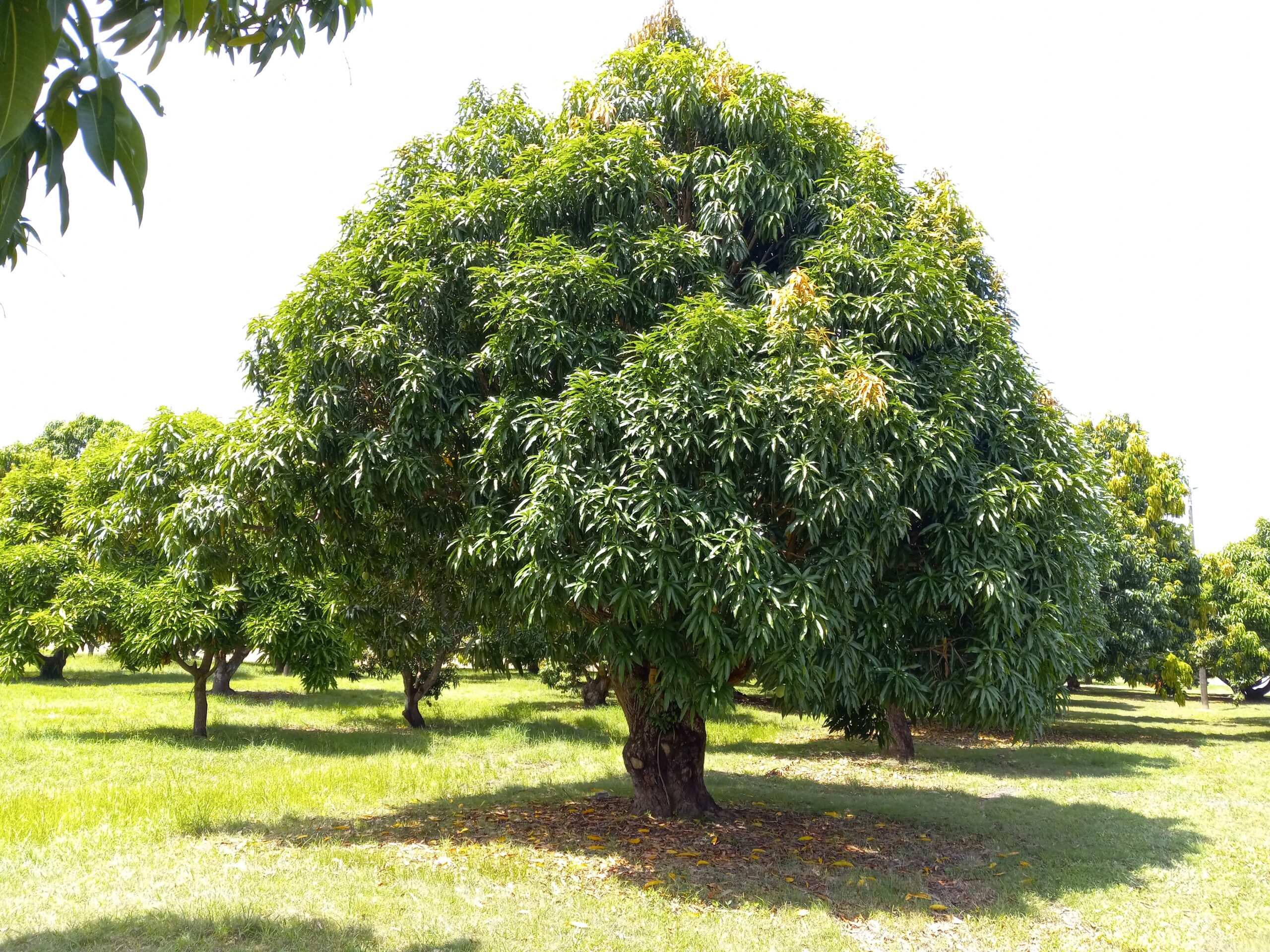
As we passed from our dry months, which were above normal rainfall, May spelled backwards, according to old people, gave us yam. Traditionally, the lovely month of May is our first wet season when old timers planted their starchy root crops that grow below the ground. May is the month of fulfilment, according to old folks, where along the roadside are fallen flowers from trees such as genep (Melicoccus bijugatus) and the pink flowers of dog almond (Andira inermis).

Well, due to our wet season so far for the past couple of months, we will get mangoes, but not in abundance. It could be a good thing, according to the old people’s saying that mango is one of the fruits when in abundance can spell the approach of hurricanes toward the islands. I hope we didn’t forget the 2017 hurricane season when Irma and Maria hit us head on. That year, as we would say traditionally, “mangoes knocking down dogs,” which means there was a bumper crop.
Mangoes are not native to the Caribbean region but originated from India where the plant has been cultivated for more than 4,000 years. I won’t go into the history of mangoes and how they were distributed throughout the tropics and subtropical region of the world. There are more than 100 varieties of mangoes in the Virgin Islands, give or take, especially on the island of St. Croix. Traditionally, they were planted along streams (called guts) to hold the banks (soil) together with taproots descending to a depth of 20 feet, while spreading feeder roots that anchor in the ground several feet deep.
Mango trees can withstand hurricane-force winds because of their strong root systems. The tree is long-lived, with some specimens known to be 300 years old and still fruiting. There are trees in the Virgin Islands at old age and still bearing fruits. Nevertheless, I wanted to get back to why we won’t have an abundance of mangoes this year. It is a pity we live in the Virgin Islands and many of us don’t observe our natural surrounding as our grandparents and great-grandparents, who have lived on these islands for donkey years, did to help us understand the changes of weather in order to survive.
Believe me, it is even more important today due to climate change and our weather pattern system of the 21st century and beyond. Last year, we had a drought for almost the entire year. The rain came in the fall season. As a rule, in a normal year of rain, mango trees start to blossom, depending on varieties, before the new year begins. If you understand our traditional rainfall pattern in the Virgin Islands, the heavy rain begins to slow down by the middle of December, thus speaking of a normal year. But in 2023, we had an unusually rainy season and the rains have continued all through January this year.

Our winter months are usually dry and cool or cold sometimes, especially at night. It is what is called by older people the Christmas breeze. Mango trees will thrive with a rainfall between 30 to 100 inches per year. However, for maximum fruit production, mango trees need a prolonged dry spell which is necessary to produce an abundance of fruits. In other words, perfect weather —not too wet, but drier. We started off a wet year for 2024. Mango trees this year hardly have fruits on them, but some trees more than others. This all depends on the mango varieties.
From January until now, rain continues to fall, which means we are above normal rainfall for dry months. As I hike and travel throughout St. Croix, everything on the surface appears lush and green in the landscape. “No such thing. Trees and shrubs and grasses sparkle with raindrops, but the knowing observer detects the same change of life and color working in this plant community that would have been the norm had no rain fallen,” noted Crucian naturalist George A. Seaman.
The other day, a friend gave me two beautiful mangoes. She mentioned to me that the mango doesn’t taste good. Being in her 90s, she said to me, “too much rain.” She was correct. Do you remember that I mentioned earlier that mangoes need a dry spell? If there is not a dry spell, the color of some variety of mangoes might change and the taste as well. For example, the Manzano mango was bred up for juicing. If too much rain falls, this mango will become watery on the tree as well as putting it up too ripe.
Most varieties of mango can be picked several days before ripening and be of good quality. However, Julie, one of the favorite mangoes of many Virgin Islands residents, must be picked very close to ripening for the best quality. Julie sets fruits from January and July. Kidney mango set fruits from January, July, and August. Palmer mango set fruits from July, August, and September. Carrie mango set fruits from January to July.
However, mangoes are very prone to biannual or irregular bearing and this characteristic is between varieties. As I said earlier, climatic conditions have considerable effect on the characteristics of mangoes. The longer and more severe the dry season, the more regular is the cropping habit.
Nevertheless, I will leave you with this proverb from Jesus: “The next day as they were leaving Bethany, Jesus was hungry. Seeing in the distance a fig tree in leaf, he went to find out if it had any fruit. When he reached it, he found nothing but leaves, because it was not the season for figs …” (Mark chapter 11:12-13). Although summer is mango season, it doesn’t mean every tree this year will bear fruits. This year might be just leaves and no fruits on your trees.
— Olasee Davis is a bush professor who lectures and writes about the culture, history, ecology and environment of the Virgin Islands when he is not leading hiking tours of the wild places and spaces of St. Croix and beyond.


